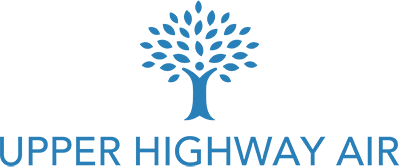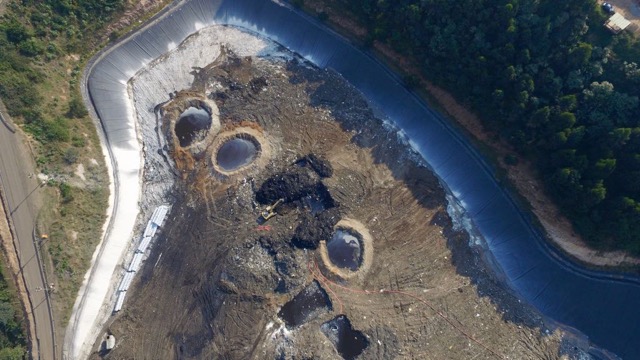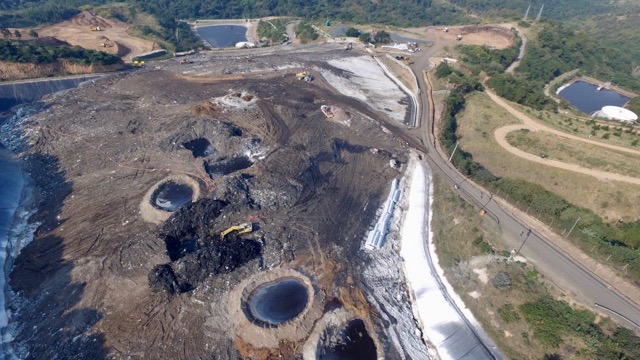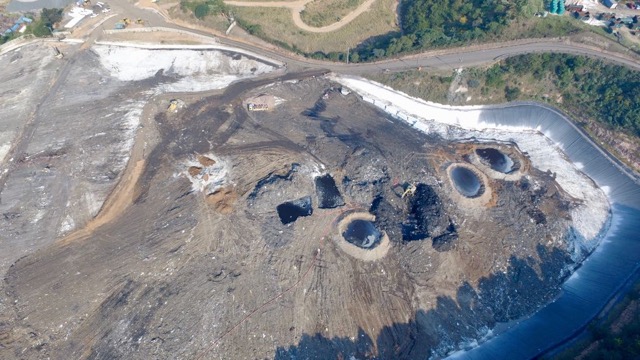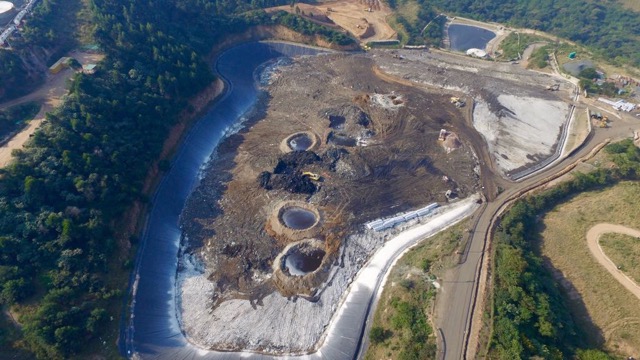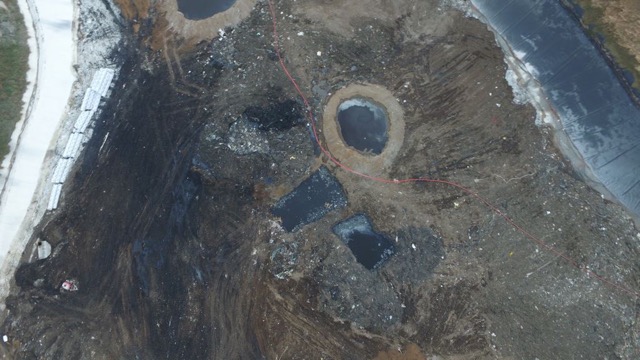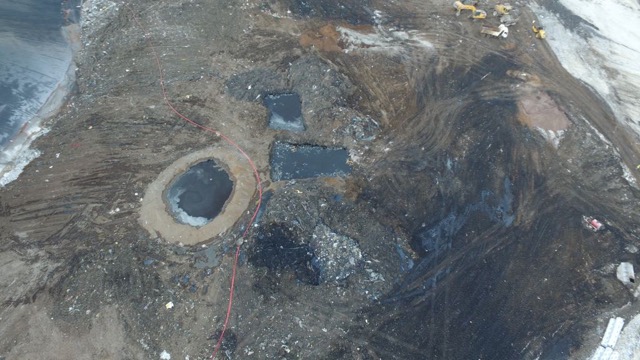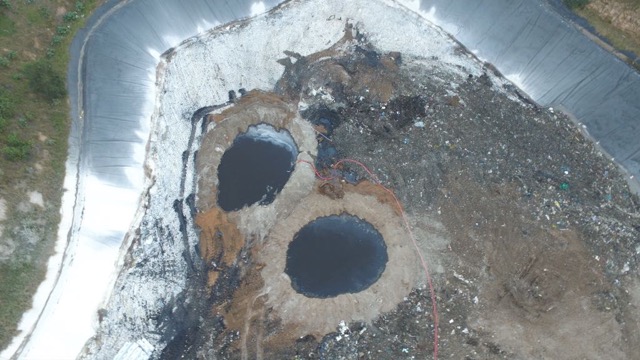As you know on 26 April 2017 the Durban High Court granted an order in favour of the UHA NPC interdicting EnviroServ from receiving, treating and disposing of any further waste into the Shongweni Landfill Site (“SLS”). That order also expressly included a prohibition against EnviroServ disposing of leachate generated by the waste already in the SLS waste body, back into the waste body.
Given that the leachate treatment plant was according to the Technical Assessment Report of 14 March 2017 (prepared pursuant to the compliance process) only operating at 20% efficiency and lacked the necessary capacity to treat effectively the total volume of leachate generated from the waste in valley 2, and because it exceeded the toxicity limits which would allow EnviroServ to obtain permission again from EThekwini to dispose of it via the sea outfall at the SWWTW, it was a practice of EnviroServ to dig trenches into the waste body, deposit the leachate into the trench and blend it with ash or lime or cement fines to solidify the leachate and in so doing dispose of it back into the waste body.
This practice was (amongst other problems identified with the SLS in the technical report) highlighted as being responsible for, amongst other things, the concentration of sulphides in the waste body and elevated landfill temperatures. It is for this reason that the DEA also included this instruction to stop disposing of leachate back into the waste body in the suspension decision and which the UHA NPC thus included in the relief sought in the High Court enforcing the terms of that suspension decision pending, amongst other things, the outcome of the appeal by EnviroServ against the suspension decision.
In terms of EnviroServ’s waste management licenses (there are two – one dealing with the disposal of waste and one with the treatment of effluent) contaminated storm water is to be treated as if it were leachate.
It is the UHA NPC’s position that the suspension decision and accordingly, the Court order, thus precludes EnviroServ from trenching contaminated storm water back into the waste body. Aside from the fact that UHA NPC believes this is the case and has demanded EnviroServ cease this practice immediately, and has also taken up this matter with EnviroServ, DEA and EThekwini, EnviroServ on record on 26 April 2017 in Court admitted that liquid waste into the site was a major problem and tendered (before the Order was granted stopping all the waste) to cease the receipt of liquid waste into the SLS valley 2 in order to let the site “dry out”.
Despite this public acknowledgment that increased liquid into the waste body is one of the contributing factors to fugitive gas emissions, and despite the debate about the effect of the Court order and the terms of the licenses which prohibit this practice according to the UHA NPC of trenching the contaminated storm water back into the waste body, EnviroServ continue with this practice.
Linked hereto you will find our letter to EThekwini, DEA and EnviroServ on 11 May 2017 and below pictures of the extensive trenching of contaminated storm water. You will see EnviroServ differ in opinion regarding the impact of the Court order and have not yet responded to UHA NPC attorneys regarding the terms of EnviroServ’s license which the UHA NPC contend preclude this practice in any event.
You will see EnviroServ contend they are forced to adopt this practice while they attempt to find alternative ways of dealing with the contaminated storm water.
EThekwini have confirmed to UHA NPC that they have received no application from EnviroServ for the discharge of leachate via the SWWTW. We have not heard about the discharge of contaminated storm water via the SWWTW but have put the municipality on terms to ensure that the contaminated storm water meets the toxicity limits for discharge, failing which, we will address this potential for pollution also.
In a preliminary response received from EnviroServ to the UHA NPC’s letter of 11 May 2017 (we await a comprehensive response), EnviroServ’s attorneys advised that EnviroServ did not consider the UHA NPC’s suggestions that EnviroServ ensure its leachate plant was improved so that it could cope with the leachate generated at site, or that its infrastructure was upgraded to ensure it could comply with its license conditions regarding the management of contaminated storm water, contributed “to constructive solutions”.
The UHA NPC is at a loss as to how suggestions that EnviroServ upgrade its facilities to ensure it can handle the leachate and contaminated storm water generated by the site cannot be considered by EnviroServ as “constructive solutions”. The UHA NPC is firmly of the view that what EnviroServ views as “constructive” solutions are those which will not put any strain on the pocket of EnviroServ and have communicated this to it.
The UHA NPC has repeatedly pointed out that this can be the only explanation for why, despite EnviroServ identifying in its 2009 Environmental Impact Control Report for valley 2 at the SLS, that an active gas extraction and recovery or destruction system was a key mitigation measure and obtained a license to install such system, it refused or failed to do so – until now, on pain of losing its license.
Indeed the UHA NPC has placed on record repeatedly that had this gas extraction system been in place, as it should have, regardless of the operational failings which have caused the current increased and unacceptable level of gasses emanating from the landfill, the gas extraction and destruction system could have logically dealt with these fugitive gasses.
The gas continues to escape the landfill and impact on the community members’ health. The continued saturation of the waste body, despite EnvrioServ recognizing the impact of this practice, is one of the causes. The drop in barometric pressure which comes with bad weather is also a “significant driver” of the fugitive gasses being emitted. Imagine a giant vacuum cleaner overhead the SLS, which the low pressure is like, drawing the gasses out of the SLS valley 2 and blowing them over to the communities. This is why the fugitive gas events are so much worse during times of inclement weather.
The gas extraction system has been confirmed by the independent technical expert to be the most practical solution to deal with the gas. The Technical reports and annexures thereto confirm that the pH argument by EnviroServ which you constantly see referred to in the press, is not the cause of the problem, but a symptom. These same reports highlight that pH adjustment is not a short to medium term solution. In fact doubt has been expressed therein whether pH adjustment to the whole waste body in valley 2 is even possible at all.
EnviroServ contend that the gas extraction system is due to be implemented during August 2017. We wait and see. What is certain is that this system will only be a viable solution if the gas being flared is properly scrubbed before it is combusted. We are addressing this issue with the DEA and will continue to do so once the UHA NPC independent expert results are available for release.
We understand leachate is still being tankered off site.
EnviroServ has not yet filed its supplementary papers before the Durban High Court to deal with the mystery polluter/ polluters. As soon as they do we will make this available.
Once this is filed, the UHA NPC has 12 working days to file its replying affidavit and then the papers will probably be complete and the senior civil Judge presiding can be approached to allocate a date for the hearing, at which hearing the UHA NPC will ask the Court to confirm the temporary interdict granted enforcing the suspension decision.
The UHA NPC is an interested party in the matter of the EnviroServ appeal pending before the Minister of Environmental Affairs against the decision of the DEA to suspend portions of its waste management license (which the UHA NPC went to Court to enforce in the mean time). The UHA NPC’s responding submissions to this appeal are due by 25 May 2017.
In these submissions the UHA NPC will deal with its experts’ reviews of the Toxicology and Airshed reports. These reviews are incomplete but we expect they will highlight various concerns with a number of aspects in the reports and which will be fully disclosed to the communities once finally formulated and submitted to the Minister and EnviroServ in the appeal process.
The UHA NPC experts are finalising the analysis of results from, inter alia, air samples taken to date. In the interests of the public, they will be released as soon as we are able to do so.
There have been many other things happening including an incident involving the independent experts and EnviroServ security employees at the SLS whilst they were trying to obtain soil and water samples. The UHA NPC is engaged with these various aspects on a continual basis.
The most pressing issue at the moment is to get to the truth regarding the gasses actually emanating from the SLS, the concentrations thereof impacting the communities and the health impacts expected from these pollutants. As soon as we have these finalised, and the reports available, they will be made available to the authorities and the communities.
Know that the UHA NPC has the communities’ interests at heart and is working tirelessly to ensure that the communities’ health is placed first and foremost, and who continue to be negatively impacted.
